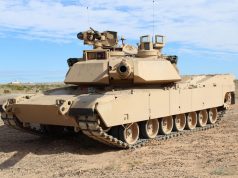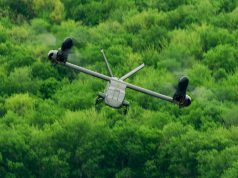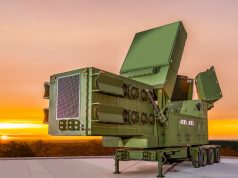
The US Army has completed a proof of concept evolution for an Autonomous Multi-Domain Launcher (AML) during an event that culminated with a multi-round live fire demonstration.
A total of seven rockets were fired during the test this month at Fort Sill, Oklahoma.
The US Army Combat Capabilities Development Command Aviation & Missile Center (AvMC), in support of the Long Range Precision Fires Cross-Functional Team (LRPF CFT), in partnership with the DEVCOM Ground Vehicle Systems Center (GVSC) and the 18th Field Artillery Brigade, worked on the test.
According to the army, AML showcased its lethality potential in anti-access/area denial (A2/AD) multi-domain operations, particularly in the Indo-Pacific theater, the focus of the demonstration’s simulation.
To demonstrate the concept via a surrogate AML system, the test team applied remote driving and firing kits to a High Mobility Artillery Rocket System, allowing for the surrogate to demonstrate semi-autonomous launcher driving and launcher control capability.
All operations of the technology demonstration were conducted by field artillery soldiers from Fort Bragg, North Carolina, with subject matter experts from DEVCOM AvMC and DEVCOM GVSC collecting feedback to guide future design demonstrations.
“This is an important first step to see what this looks like,” said AvMC Director Jeffrey Langhout. “Twenty years ago we would have probably never done it this way, but because of who we are today, the very first time we put this together, we had real Soldiers doing the operating. Everything was done by soldiers. All the engineers and all the great technologists were sitting out there and watching and cheering them on, but they were doing all of the work. It was great to be a part of.”
The AML concept brings together two key elements of the Army Modernization Strategy — robotics and autonomy. The autonomous, unmanned, highly mobile, C-130 transportable launcher would increase lethality, with additional launcher platforms, and add three times the firepower and magazine depth, while minimally increasing force structure.
“This gives the warfighter an agile, deployable, mid-range capability that will be survivable in an archipelagic operational environment, island hopping type of campaign, to engage a variety of A2/AD targets,” said LRPF CFT Director Brig. Gen. John Rafferty.
While the demonstration identified physical and cybersecurity challenges for the unmanned launchers and evaluated communication needs for manned-teaming, the bread and butter of the nearly three week event was the opportunity for DEVCOM engineers to work side by side with the warfighter. Engineers gathered valuable feedback, whether it was the mechanic ensuring the oil had been checked on the vehicle or capabilities the soldiers would like to see in future iterations.
“Any time you can get soldiers, operators and engineers together — it’s impossible to overstate how important soldier touchpoints are,” Rafferty said. “This gets right at one of the fundamental tenets of Army Futures Command, which is soldier-informed development.”
“Every individual has a different view, so the more input we have, the better this will be,” said Lauren Ruta, a member of the AvMC AML test team. “It’s good for both sides, because as engineers, we design this but we’re not the users. There’s a huge disconnect between us designing and the actual users, because we don’t always know exactly what they need. Seeing what will really help them helps us make the design better. It’s good for the Soldier because they oftentimes just get equipment, but they don’t always get to see the work that went into designing it.”
For members of the 18th Field Artillery Brigade, having their voices heard and offering insight into a concept that may one day make it into theater was an exciting prospect.
“Our job here is to figure out what’s the difference between AML and what we always do, so we can give good, constructive feedback on what we do in the field every day versus what they have so far,” said 1st Lt. Janeen Smith with the 18th Field Artillery Brigade. “My crew is super excited. Later in life we can explain to everyone, ‘This is what I was a part of. I was part of the making of that.’”


























